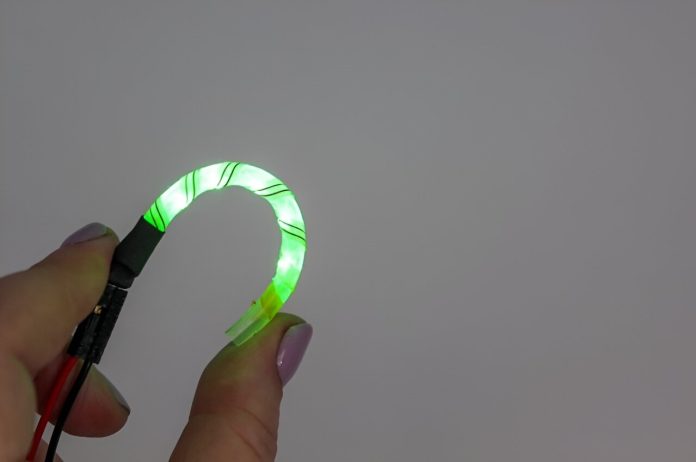
Researchers at Nottingham Trent University have developed a groundbreaking 3D stretchable electronic strip, potentially revolutionizing wearable electronic textiles.
This new technology could pave the way for advanced devices embedded in clothing, particularly benefiting healthcare and elite sports.
The innovative work, conducted by the Medical Technologies Innovation Facility at Nottingham Trent University and industry partner Kymira Ltd, is detailed in the journal Scientific Reports.
The research team highlights that their new strip offers significant improvements over existing technologies due to its ability to stretch and bend with the body.
The strip’s unique 3D structure, where the circuitry is twisted into a helical ribbon, allows it to transform from flexible to stretchable.
This design enables the strip to bend in multiple directions and stretch up to at least half its original size.
This stretchability is crucial for textiles, like medical compression garments and sportswear, which must move with the wearer without restricting their motion.
The researchers showcased LED and temperature-sensing helical e-strips as part of their study. A rubber cord supports the structure, preventing damage from buckling and ensuring compatibility with clothing and washability.
Dr. Yang Wei, an expert in electronic textiles and electronic engineering at Nottingham Trent University, and the principal investigator of the research, explained, “We have shown the potential for a new form of 3D helical strip for embedded electronics in e-textiles.
We have defined the design, developed prototypes, performed mechanical testing, and validated the concept’s functionality.
This opens up many new possibilities for e-textiles in healthcare and elite sports.”
Jessica Stanley, the lead author and a research fellow at the university’s Medical Technologies Innovation Facility and Department of Engineering, likened the concept to winding a metal wire into a spring to make it stretchy.
“While helices have been used in stretchable electronic devices before, they have mostly been used as interconnects or single components. Our work is different because we have flexible circuitry containing small components wound into a helix, allowing the entire circuit to stretch.”
Stanley emphasized the importance of stretchable electronic parts in e-textile products, which need to move and stretch with the fabric. This study marks their initial work on achieving this goal.
The technology has been patented, which the researchers hope will lead to faster adoption by the industry. With its potential to enhance the functionality and comfort of wearable electronics, this new 3D stretchable electronic strip could soon become a key component in the next generation of e-textiles.
This advancement promises to make wearable technology more practical and beneficial for users in various fields.



